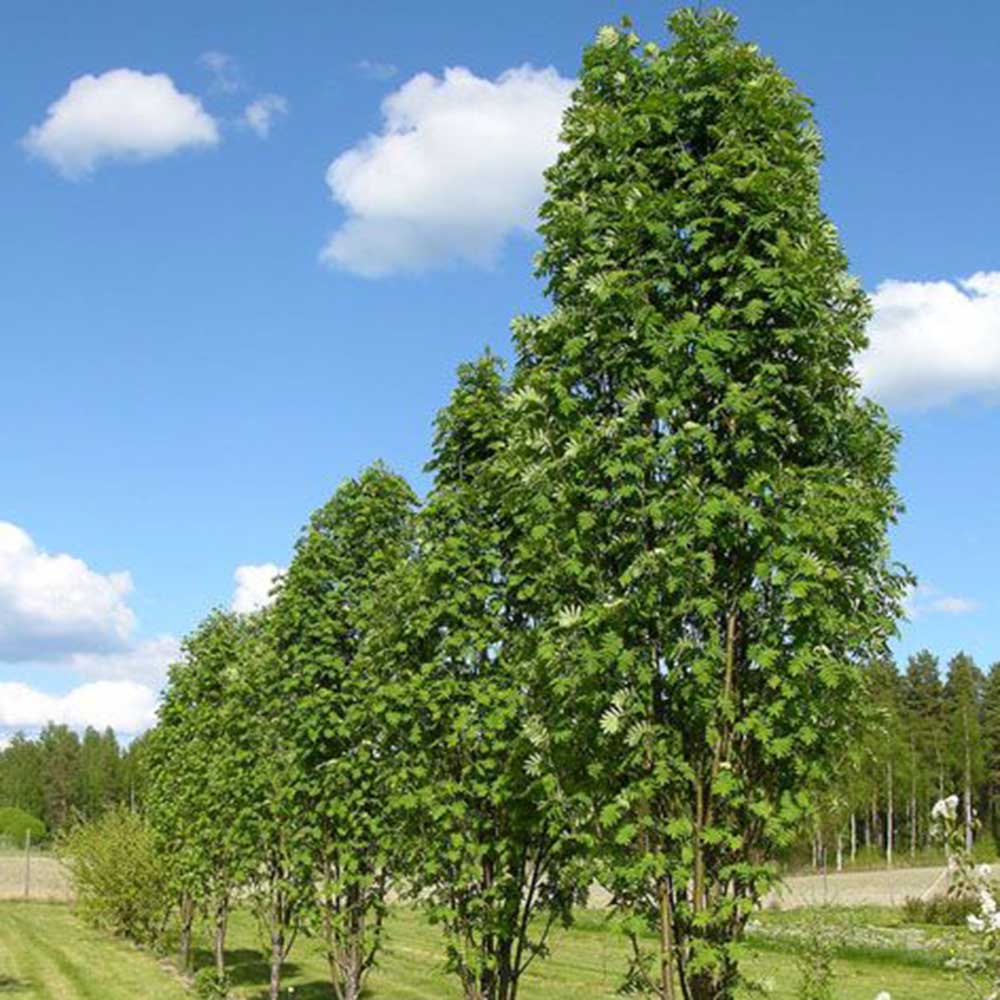1
/
of
1
Riverdene Garden Center
Pyramidal Mountain Ash
Pyramidal Mountain Ash
Regular price
$99.99 CAD
Regular price
Sale price
$99.99 CAD
Unit price
/
per
Couldn't load pickup availability
Sorbus aucuparia 'Fastigiata'
Pyramidal Mountain Ash is a narrow, upright variety of Mountain Ash, making it a great choice for smaller yards, narrow spaces, or as a vertical accent in landscapes. It retains the classic white spring flowers, bright red berries, and vibrant fall colour while maintaining a more compact and columnar shape.
Planting & Location
- Hardiness Zone: 2-5
- Mature Size: 20-25 feet tall, 8-12 feet wide
- Growth Rate: Moderate (12-18 inches per year)
- Sunlight Needs: Full sun to partial shade (best berry production in full sun)
-
Soil Preference:
- Prefers moist, well-drained loam but adapts to sandy or clay soils.
- Slightly acidic soil (pH 5.5-6.5) is ideal, but it tolerates neutral soils.
- Avoid poor drainage—Mountain Ash is prone to root rot in soggy conditions.
- Spacing: 10-12 feet apart for a dense hedge, 12-15 feet apart for individual plantings.
Watering
- Young Trees: Deep watering 1-2 times per week for the first two years.
- Established Trees: Water every 2-3 weeks in dry weather.
- Drought Tolerance: Moderate; benefits from occasional deep watering in hot summers.
- Winter Watering: Provide one last deep watering in fall if the season has been dry.
Fertilizing
- First Year: No fertilizer needed—focus on root establishment.
- Mature Trees: Apply a balanced slow-release fertilizer (10-10-10) in early spring.
- Organic Alternative: Mulch with compost or well-rotted manure in spring.
Pruning & Maintenance
- Best Time to Prune: Late winter to early spring (before new growth starts).
-
How to Prune:
- Remove dead, diseased, or crossing branches for better air circulation.
- Trim back any wayward branches to maintain a narrow, upright shape.
- Avoid excessive summer pruning—it can stress the tree.
- Suckering: May produce root suckers—remove them to maintain the tree’s shape.
Pest & Disease Management
Common Pests:
-
Mountain Ash Sawfly – Larvae feed on leaves.
- Solution: Handpick or use insecticidal soap if infestation is severe.
-
Aphids – Sap-sucking insects causing curled leaves.
- Solution: Encourage natural predators (ladybugs) or use insecticidal soap.
-
Borers – Can attack stressed trees.
- Solution: Keep trees healthy and well-watered, and avoid bark damage.
Common Diseases:
-
Fire Blight – Causes blackened, wilting branches.
- Solution: Prune infected branches 8-12 inches below affected areas and sanitize tools. Avoid excess nitrogen.
-
Rust (Gymnosporangium spp.) – Orange spots on leaves and berries.
- Solution: Remove nearby junipers (alternate host) and apply fungicide if severe.
-
Powdery Mildew – White fungal growth on leaves.
- Solution: Improve air circulation and apply fungicide if needed.
Winter Protection
- Young Trees: Wrap the trunk with burlap or tree guards in late fall to prevent sunscald and frost cracks.
- Mulching: Apply 2-4 inches of mulch around the base (not touching the trunk) to insulate roots from extreme cold.
- Berries & Wildlife: Birds love the berries, but if you want to keep them longer, consider netting the tree in late summer.
Landscape Uses
Ideal for narrow spaces and small yards
Great vertical accent for landscaping
Attracts birds with bright red berries
Low-maintenance & cold-hardy
Beautiful fall colour (orange-red leaves, bright berries)
Works well in hedges, privacy screens, and urban settings
Photo courtesy of Foothills Nursery
Share


